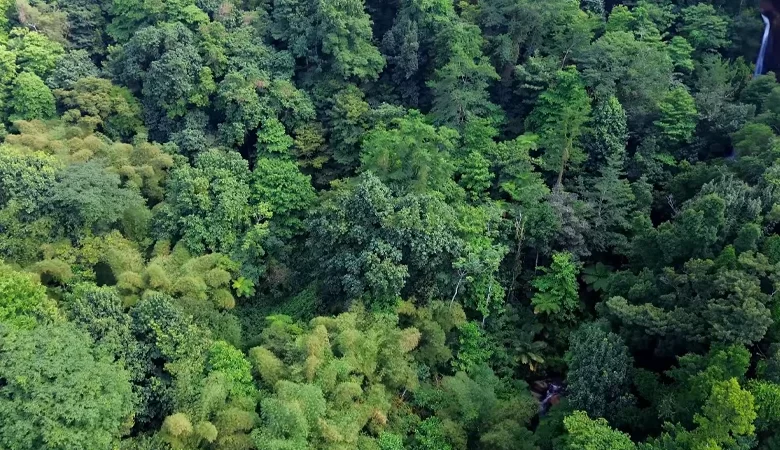Understanding Dominica’s Climate

Dominica’s climate is a defining feature of its identity as the “Nature Isle of the Caribbean.” Shaped by its volcanic origins, mountainous terrain, and position between the Atlantic Ocean and the Caribbean Sea, Dominica enjoys a tropical climate that nurtures its lush biodiversity and vibrant ecosystems. The island’s climate is central to its ecological richness and supports its eco-tourism, agriculture, and climate resilience efforts.
Tropical Warmth and Seasonal Variability of Dominica’s Climate
Dominica enjoys warm temperatures year-round, with average highs ranging from 24°C (75°F) to 30°C (86°F). Coastal areas are typically warmer and more humid, while higher altitudes, such as Morne Diablotin and Morne Trois Pitons, experience cooler temperatures, especially during the evenings. This consistent warmth creates a welcoming environment for visitors throughout the year.
The island experiences two distinct seasons:
- Wet Season (June to November): Marked by heavy rainfall and occasional tropical storms or hurricanes, this season is crucial in replenishing Dominica’s rivers and waterfalls. Events like Hurricane Maria in 2017 have highlighted the island’s vulnerability to extreme weather.
- Dry Season (December to May): Characterized by sunnier skies and reduced rainfall, this season is ideal for outdoor activities such as hiking, scuba diving, snorkelling and cultural festivals.
Abundant Rainfall and Microclimates
Dominica’s rugged landscape influences its rainfall distribution, creating diverse microclimates. Annual rainfall ranges from 1,800 mm (70 inches) in coastal areas to over 10,000 mm (390 inches) in mountainous regions. The interior highlands, including the Central Forest Reserve, receive the highest precipitation, making them among the wettest locations in the Caribbean.
These varying rainfall patterns foster ecosystems from dense rainforests to coastal mangroves. Regions like the Kalinago Territory and southern villages like Soufriere and Scotts Head experience moderate rainfall, providing ideal conditions for agriculture and eco-tourism. The island’s abundant rivers, such as the Layou River and Indian River, originate from these rain-drenched highlands and are essential for irrigation and recreational activities like river tubing.
Biodiversity and Ecosystem Support
Dominica’s tropical climate supports a remarkable array of flora and fauna. Its rainforests are home to endemic species such as the Sisserou Parrot (Imperial Amazon), the national bird, and the Jaco Parrot. Other wildlife, including agoutis, iguanas, and a diverse range of amphibians, thrive in the island’s varied habitats.
The warm coastal waters of the Caribbean Sea and Atlantic Ocean further enhance biodiversity. Coral reefs, such as Champagne Reef and Tube Reef, support marine species like endangered sea turtles, dolphins, and vibrant fish populations, drawing divers and snorkelers worldwide. Protected areas like the Soufriere Scotts Head Marine Reserve and Cabrits National Park Marine Section safeguard these ecosystems, ensuring long-term sustainability.
Climate Resilience and Sustainability
Dominica’s commitment to climate change is evident in its ambitious goal to become the world’s first climate-resilient nation. The government has implemented initiatives through the Climate Resilience Execution Agency for Dominica (CREAD) to strengthen infrastructure, promote renewable energy, and conserve natural resources.
Geothermal energy projects, such as the Geothermal Power Plant in Laudat, align with this vision by reducing reliance on imported fossil fuels and lowering greenhouse gas emissions. Reforestation efforts and sustainable agriculture programs further support Dominica’s dedication to environmental preservation.
Impact on Tourism and Agriculture
The island’s climate is central to its eco-tourism appeal. Visitors are drawn to its temperate highlands, vibrant rainforests, and pristine beaches. Hiking trails like the Waitukubuli National Trail, which spans the island, offer unparalleled access to Dominica’s natural beauty. Attractions such as Trafalgar Falls, Boiling Lake, and Emerald Pool thrive due to the island’s favourable weather conditions.
In agriculture, Dominica’s fertile volcanic soil, combined with its tropical climate, supports the cultivation of bananas, citrus fruits, root crops, and spices. These agricultural products sustain the local economy and contribute to food security and cultural identity.
A Climate of Opportunity and Challenge
Dominica’s tropical climate offers abundant opportunities for ecological preservation, tourism, and agricultural development. However, it also presents challenges, such as vulnerability to hurricanes and extreme rainfall. Through resilience-building strategies, the island continues to harness the benefits of its climate while mitigating its risks.
Dominica’s climate captures its essence as the “Nature Isle,” providing a harmonious balance between natural beauty and human development. From misty mountain peaks to sunlit coastlines, the island’s weather shapes its landscapes, sustains its people, and invites visitors to experience its unparalleled charm.




